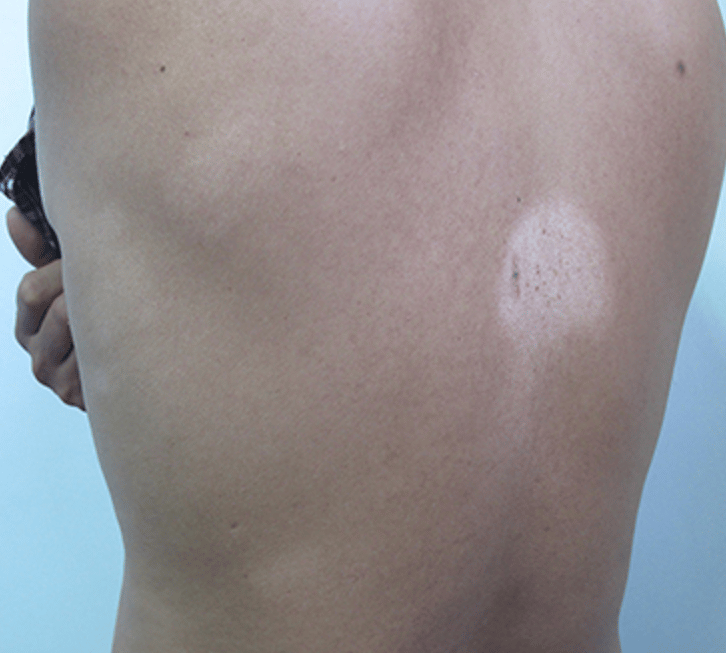Restoring Skin Color: Unveiling Hypopigmentation Causes and Treatment
HYPOPIGMENTATION
9/5/20233 min read


In the intricate mosaic of our skin's canvas, each hue and shade tells a unique story. Yet, at times, the tale is marked by the absence of color – a phenomenon known as hypopigmentation. As dedicated champions of skincare, we embark on a journey to decode the mysteries of hypopigmentation – unraveling its causes, demystifying its effects, and presenting a carefully curated selection of treatments and products. Whether you're a skincare connoisseur or an enthusiast seeking effective solutions, this comprehensive guide offers insights into restoring skin color and reclaiming the vibrant beauty that defines you.
A World of Color and Expression
Before we journey into treatment, let's pause to reflect on the significance of skin color as a form of expression:
Color's Impact: Skin color is a dynamic form of expression, reflecting diversity, heritage, and individuality.
Hypopigmentation's Whisper: Hypopigmentation represents the absence of color due to factors that disrupt melanin production.
The Science of Melanin and Coloration
Delve into the scientific underpinnings of hypopigmentation, understanding the role of melanin in skin coloration:
Melanin Magic: Melanin, a pigment produced by specialized cells, contributes to skin, hair, and eye color.
Hypopigmentation Defined: Hypopigmentation arises from the reduction or absence of melanin, resulting in pale or white patches.
Unmasking Hypopigmentation Causes
Uncover the diverse array of factors that can trigger hypopigmentation and disrupt the vibrant palette of your skin:
Post-Inflammatory Culprits: Trauma, burns, or inflammatory skin conditions can lead to hypopigmentation as the skin heals.
Autoimmune Influence: Certain autoimmune disorders, such as vitiligo, disrupt melanin production, causing depigmented areas.
Embracing the Path of Restoration
Navigate the journey of restoring skin color with targeted strategies and treatments:
Photoprotective Habits: Shield your skin from harmful UV rays with diligent sun protection to prevent further hypopigmentation.
Topical Treatment Marvels: Explore topical solutions like corticosteroids or calcineurin inhibitors prescribed by dermatologists.
Microneedling and PRP: Innovative treatments like microneedling and platelet-rich plasma (PRP) can stimulate melanin production.
The Path to Pigmentation: Top 8 Products
Discover a thoughtfully curated collection of skincare products designed to aid in the restoration of skin color:
Depigmentation Cream: SkinCeuticals Advanced Pigment Corrector targets uneven pigmentation, restoring a balanced complexion.
Medical-Grade Solutions: EltaMD UV Clear Broad-Spectrum SPF 46 pairs sun protection with niacinamide to support pigmentation.
Rejuvenating Serum: Obagi Nu-Derm Clear FX promotes even skin tone while nurturing melanin production.
Clinical Approaches to Restoration
Explore advanced clinical methods and treatments to restore skin color and address hypopigmentation:
Laser Resurgence: Fractional laser therapy stimulates melanin production and reduces hypopigmentation's appearance.
Transplant Possibilities: Surgical techniques like melanocyte transplantation offer targeted solutions for restoring skin color.
Camouflaging Magic: Makeup and concealers can offer temporary solutions for minimizing the appearance of hypopigmented areas.
Crafting Your Path to Restoration
Craft a personalized skincare path that combines knowledge and care to restore skin color and embrace your unique beauty:
Sun Care Dedication: Begin with diligent sun protection to shield your skin from further damage and minimize hypopigmentation.
Medical Guidance: Consult a dermatologist to explore prescription treatments tailored to your specific hypopigmentation concerns.
Topical Serums: Incorporate targeted serums with ingredients like niacinamide or retinoids to promote melanin production.
Clinical Consideration: Explore advanced treatments like laser therapy or transplantation under the guidance of a medical professional.
Self-Expression: Celebrate your journey to restored skin color as a unique chapter in your narrative, a testament to your strength and beauty.
Embrace the Journey to Restoration
As you embark on the path to restoring skin color, remember that every step is a brushstroke in the masterpiece of your identity.
Celebrate the journey of restoration as a reflection of your resilience, your individuality, and your commitment to self-care. Bid adieu to hypopigmentation and welcome a future of vibrant, restored skin color that narrates your beautiful story.
FAQ
How to reverse hypopigmentation naturally?
While natural reversal of hypopigmentation can occur in some cases, it's not guaranteed. Here are key points to consider:
Natural Healing: In some instances, the skin may gradually regain pigment over time as part of its natural healing process. This can be more likely in cases of post-inflammatory hypopigmentation.
Sun Exposure: Sun exposure may help darken hypopigmented areas over time, but it should be done cautiously and with sunscreen to prevent further damage.
Skin Care: Using gentle skincare products and avoiding harsh chemicals can support the skin's natural healing processes.
Can hypopigmentation be reversed with cosmetic procedures?
Cosmetic procedures can be effective in treating hypopigmentation, especially in cases of post-inflammatory hypopigmentation:
Micropigmentation: Also known as medical tattooing, micropigmentation involves implanting pigments into the skin to match the surrounding color and camouflage hypopigmented areas.
Dermal Fillers: In some cases, dermal fillers can be injected into hypopigmented areas to restore volume and color.
How does hypopigmentation occur after laser hair removal?
Hypopigmentation from laser hair removal can occur due to several factors:
Melanin Targeting: Lasers used in hair removal target melanin, the pigment responsible for hair and skin color. In some cases, the laser may inadvertently affect surrounding melanocytes, leading to decreased pigment production.
Overexposure: Using incorrect laser settings or overexposing the skin to laser energy can increase the risk of hypopigmentation.
Skin Type: Individuals with darker skin tones are more prone to hypopigmentation, as there is a higher concentration of melanin to target.
Get in touch
Contacts
contact@visionderma.com
